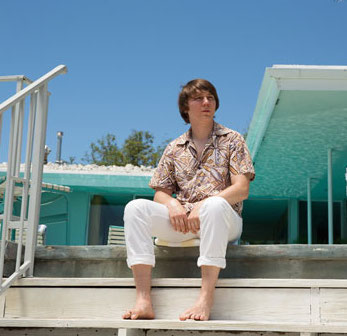Love & Mercy
 Early on in the new Brian Wilson biopic there’s a moment that just about brought me to tears: Paul Dano, playing the young Brian, is seen by himself at an upright piano, hesitantly picking out the chords of “God Only Knows”, as if they’re just occurring to him. Exposed in that way, their unearthly beauty is even more apparent. A glance at the piano arrangement suggests that they include an F#mi6, a Cdim and an A#5-. Brian would have been 23 at the time. Where on earth did he get such ideas?
Early on in the new Brian Wilson biopic there’s a moment that just about brought me to tears: Paul Dano, playing the young Brian, is seen by himself at an upright piano, hesitantly picking out the chords of “God Only Knows”, as if they’re just occurring to him. Exposed in that way, their unearthly beauty is even more apparent. A glance at the piano arrangement suggests that they include an F#mi6, a Cdim and an A#5-. Brian would have been 23 at the time. Where on earth did he get such ideas?
Love & Mercy can’t tell us that. No one can. But it makes a very good attempt at showing us what it must have been like to be Brian Wilson at two important stages of his career: 1965-66, when he was conceiving Pet Sounds and Smile in the face of scepticism from certain fellow Beach Boys, and the late ’80s, when he met his second wife, Melinda Ledbetter, while under the dictatorial control of the therapist Eugene Landy.
I met Brian five years after the first period, when he was virtually silenced and living with his first wife, Marilyn Rovell, in the house on Bellagio Road where he wrote those masterpieces, and then again in the middle of the second, when he and Landy came to London and stayed at the Mayfair Hotel, where I went to try an conduct an interview.
Notoriously, Brian’s weight has always been an indication of his state of mind. He was seriously overweight the first time (although not close to the 300lb that he would become), and almost skeletal the second. In the Beverly Hills house he was charming and forthcoming, to the point of sitting down at the piano to perform the complete “Heroes and Villains” and his own arrangement of “Shortnin’ Bread”; he also insisted that we listen to the Ronettes’ “Be My Baby” several times. In London he was practically a zombie, fussed over by the ever-attentive Landy, and it was such a depressing experience that I went away and didn’t write up the meagre results of our conversation.
John Cusack does a good job of portraying that older Wilson, but Dano (above) is exceptional in his ability to convey Brian’s temperament through mannerisms. The director, Bill Pohlad, gets the period details right — the studio scenes with the Wrecking Crew at Gold Star and Western are wonderfully realistic — and loses his way only towards the end, first with an impressionistic attempt to depict the damage that sent Brian deaf in one ear and then with a surrealistic sequence that places him at various ages, from infancy to late middle age, in a white bed in a white room.
Inevitably, the movie’s bad guys are Landy, Murry Wilson and Mike Love. But, as with a lot of real-life bad guys, there is something to be said in mitigation for each of them. Before he turned into a manipulative monster, Landy (who died in 2006) almost certainly saved Brian from the potentially fatal consequences of a pathological overconsumption of drugs and Reddi-Wip cream topping. Brian’s dad was another monster, with a violent temper, but at least he encouraged his three sons’ desire to form a band. And although Love might live to be 100 without getting his head around Van Dyke Parks’s “Over and over the crow flies uncover the cornfield”, he did provide the lyrics to “Fun, Fun, Fun”, “California Girls” and “Good Vibrations”.
The last time I saw Brian, at the Royal Festival Hall in 2007, I went with two tickets, an invitation to go backstage after the show, and my daughter, who loves the Beach Boys. It was a thoroughly good example of the latter-day Brian Wilson concert: not as historic as the Pet Sounds and Smile recreations, but spirited, accomplished and deeply enjoyable. Afterwards, having made our way backstage with the idea of saying hello, we found Brian seated at a table, signing things. There was a queue, so we joined it. By the time we got to the front he seemed exhausted and wasn’t even raising his head to greet his visitors. So we simply thanked him and left.
That little episode made me think about what he had been through to bring us all that marvellous music and about what it had cost him — and was still costing him, to an extent, even though his almost miraculous rebirth seemed to have brought him private satisfaction along with a fresh wave of public acclaim. Love & Mercy is an authorised film, which means that it omits some things and elides others, but in the end it’s worthy of its subject. And if you come out thinking Paul Giamatti made Eugene Landy seem scary, I can tell you that the real thing was a whole lot more terrifying.





